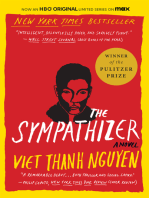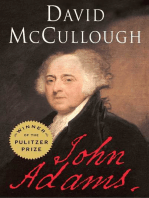Professional Documents
Culture Documents
1 Lab Rom
1 Lab Rom
Uploaded by
nessa0 ratings0% found this document useful (0 votes)
12 views6 pagesOriginal Title
1 LAB ROM.docx
Copyright
© © All Rights Reserved
Available Formats
DOCX, PDF or read online from Scribd
Share this document
Did you find this document useful?
Is this content inappropriate?
Report this DocumentCopyright:
© All Rights Reserved
Available Formats
Download as DOCX, PDF or read online from Scribd
Download as docx or pdf
0 ratings0% found this document useful (0 votes)
12 views6 pages1 Lab Rom
1 Lab Rom
Uploaded by
nessaCopyright:
© All Rights Reserved
Available Formats
Download as DOCX, PDF or read online from Scribd
Download as docx or pdf
You are on page 1of 6
eee from the flexed position to the ‘upright
an gore the head fromthe upright poston back
eaten tes pare laterally to the right and left
Rotation. Turn the face as far as possible to the right and left
(Figure 42-4 mh.
‘Shoulder—Ball-and-Socket Joint
Flexion. Raise each atm from a position bythe side forward and
‘upward to a position beside the head (Figure 42-5
Extension. Move each arm from a vertical position beside the
hhead forward and down to @ resting position atthe side of the
body (Figure 42-5).
Hyperextension. Move each arm from a resting side postion to
‘behind the body (Figure 42-5).
‘Abduction. Move each arm laterally from 2 resting position atthe
| sides toa side position above the head, palm of the hand away
‘om the head (Figure 42-6
‘Adduction (anterior). Move each arm from a position atthe sides
‘across the front ofthe body as faras possible (Figure 42-6).The
‘elbow may be straight or bent.
sider
‘With each arm held out to the side at shou!
bent toa right angle, fingers pointing down,
‘so that the fingers point up (Figure 42-8
[aan
45° from midline
45° from midline
45° from midline
40° from midline
70° from midline
180" from the side
180° from vertical
position beside the head
50° from side position
180"
50"
360°
(ee
Figure 42-5
|
Figure 42-6
Figure 42-7.--<~
ow
ROINY MERE oro:
INOW WOIWOLYNY
SNOIWWINY SINS,
continued on page 1062
EZ
ete SO
TABLE 42-2 Selected Joint Movements (continued)
[mene
Cinna ees
Elbow—Hinge Joint |
Flexion. Bring each lower arm forward and upward sothat the | 150"
hand is atthe shoulder (Figure 42-9 m,
Extension. Bring each lower atm forward and downward, 150°
straightening the arm (Figure 42-9)
Rotation for supination. Turn each hand and forearm so that the | 70°t0.90°
palm is facing upward (Figure 42-10
Rotation for pronation. Turn each hand and forearm sothatthe | 70°t0.90*
palm is facing downward (Figure 42-10),
|
| Wrist—condyloid Joint
Flexion. Bring the fingers ofeach hand toward the inner aspect of | 80°t0 90"
the forearm (Figure 42-11 M,
Extehsion. Straighten each hand to the same plane asthearm | 80°to 90°
Figure 42-11
Hyperextension. Send the fingers ofeach hand backasfaras | 70*to90°
possible (Figure 42-12, ‘
Radial flexion (abduction). Bend each wrist laterally toward the | 0*to 20"
‘thumb side with hand supinated (Figure 42-13 Wi
Uinar flexion (adduction). Bend each wrist laterally toward the | 30°to 50°
fifth finger withthe hand supinated (Figure 42-13)
Hand and Fingers: Metacarpophalangeal Joints—Condyloid;
Interphalangeal Joints—Hinge
Flexion. Make a fist wth each hand (Figure 42-14 M) 90"
Extension. Straighten the fingers of each hand (Figure 42-14). | 99°
Hyperextension. Bend the fingers of each hand backasfaras | 30°
possible (Figure 42-14),
‘Abduction. Spread the fingers of each hand apart (Figure 42-15 m). | 20°
‘Adduction. Bring the fingers of each hand together (Figure 42-15).| 20"
Thumb—Saddle Joint
Flexion. Move each thumb across the palmar surface of the hand. | 90°
toward the fifth finger (Figure 42-16 M.
Extension. Move each thumb away from the hand (Figure 42-16). | gor
‘Abduction. Extend each thumb laterally (Figure 42-17 m, 30°
‘Adduction, Move each thumb back othe hand (Figure 42-17), | 39°
(mee
Figure 42-9
Figure 42-10
Figure 42-15 y—.
Figure 42-16
1062
Pecan
‘Opposition. Touch each thumb
to the top of each finger of the
‘same hand.The thumb joint movements involved
rotation and exion (Figure 42-18 cate ira
Hip—Ball-and-Socket Joint
Flexion. Move each leg forward and upward. The knee may be
‘extended or flexed (Figure 42-19 m), e
Extension. Move each leg back beside the other (Figure 42-20
Hyperextension. Move each leg back behind the body
(Figure 42-20)
‘Abduction, Move each leg out to the side (Figure 42-21 m
Moye each leg back to the other leg and beyond in
front of it (Figure 42-21).
‘Circumduction. Move each leg backward, up,to the side, and
‘down in acircle (Figure 42-22
atthe toes
rotation. Turn each foot and leg inward so that
fat as possible toward the other leg (Figure 42-23 Wh.
rotation. Tum each foot and leg outward so thatthe toes
2s far as possible away from the other leg (Figure 42-23).
| astoso"
| 20-1030" beyond ther
| ea
Knee extended, 90';knee
flexed, 120°
90°10 120"
30°10 50”
continued on page 1064
You might also like
- The Subtle Art of Not Giving a F*ck: A Counterintuitive Approach to Living a Good LifeFrom EverandThe Subtle Art of Not Giving a F*ck: A Counterintuitive Approach to Living a Good LifeRating: 4 out of 5 stars4/5 (5838)
- The Gifts of Imperfection: Let Go of Who You Think You're Supposed to Be and Embrace Who You AreFrom EverandThe Gifts of Imperfection: Let Go of Who You Think You're Supposed to Be and Embrace Who You AreRating: 4 out of 5 stars4/5 (1093)
- Never Split the Difference: Negotiating As If Your Life Depended On ItFrom EverandNever Split the Difference: Negotiating As If Your Life Depended On ItRating: 4.5 out of 5 stars4.5/5 (862)
- Grit: The Power of Passion and PerseveranceFrom EverandGrit: The Power of Passion and PerseveranceRating: 4 out of 5 stars4/5 (591)
- Hidden Figures: The American Dream and the Untold Story of the Black Women Mathematicians Who Helped Win the Space RaceFrom EverandHidden Figures: The American Dream and the Untold Story of the Black Women Mathematicians Who Helped Win the Space RaceRating: 4 out of 5 stars4/5 (903)
- Shoe Dog: A Memoir by the Creator of NikeFrom EverandShoe Dog: A Memoir by the Creator of NikeRating: 4.5 out of 5 stars4.5/5 (542)
- The Hard Thing About Hard Things: Building a Business When There Are No Easy AnswersFrom EverandThe Hard Thing About Hard Things: Building a Business When There Are No Easy AnswersRating: 4.5 out of 5 stars4.5/5 (351)
- Elon Musk: Tesla, SpaceX, and the Quest for a Fantastic FutureFrom EverandElon Musk: Tesla, SpaceX, and the Quest for a Fantastic FutureRating: 4.5 out of 5 stars4.5/5 (474)
- Her Body and Other Parties: StoriesFrom EverandHer Body and Other Parties: StoriesRating: 4 out of 5 stars4/5 (824)
- The Sympathizer: A Novel (Pulitzer Prize for Fiction)From EverandThe Sympathizer: A Novel (Pulitzer Prize for Fiction)Rating: 4.5 out of 5 stars4.5/5 (122)
- The Emperor of All Maladies: A Biography of CancerFrom EverandThe Emperor of All Maladies: A Biography of CancerRating: 4.5 out of 5 stars4.5/5 (271)
- The Little Book of Hygge: Danish Secrets to Happy LivingFrom EverandThe Little Book of Hygge: Danish Secrets to Happy LivingRating: 3.5 out of 5 stars3.5/5 (405)
- The World Is Flat 3.0: A Brief History of the Twenty-first CenturyFrom EverandThe World Is Flat 3.0: A Brief History of the Twenty-first CenturyRating: 3.5 out of 5 stars3.5/5 (2267)
- The Yellow House: A Memoir (2019 National Book Award Winner)From EverandThe Yellow House: A Memoir (2019 National Book Award Winner)Rating: 4 out of 5 stars4/5 (98)
- Devil in the Grove: Thurgood Marshall, the Groveland Boys, and the Dawn of a New AmericaFrom EverandDevil in the Grove: Thurgood Marshall, the Groveland Boys, and the Dawn of a New AmericaRating: 4.5 out of 5 stars4.5/5 (268)
- A Heartbreaking Work Of Staggering Genius: A Memoir Based on a True StoryFrom EverandA Heartbreaking Work Of Staggering Genius: A Memoir Based on a True StoryRating: 3.5 out of 5 stars3.5/5 (232)
- Team of Rivals: The Political Genius of Abraham LincolnFrom EverandTeam of Rivals: The Political Genius of Abraham LincolnRating: 4.5 out of 5 stars4.5/5 (234)
- On Fire: The (Burning) Case for a Green New DealFrom EverandOn Fire: The (Burning) Case for a Green New DealRating: 4 out of 5 stars4/5 (74)
- The Unwinding: An Inner History of the New AmericaFrom EverandThe Unwinding: An Inner History of the New AmericaRating: 4 out of 5 stars4/5 (45)
- Timeline of Philippine EducationDocument8 pagesTimeline of Philippine Educationnessa100% (7)
- Assisting With Positioning and TransferringDocument11 pagesAssisting With Positioning and TransferringnessaNo ratings yet
- Admission, Transfer and DischargeDocument63 pagesAdmission, Transfer and DischargenessaNo ratings yet
- Drug StudyDocument11 pagesDrug StudynessaNo ratings yet
- Vital Signs: (Pulse & Blood Pressure)Document47 pagesVital Signs: (Pulse & Blood Pressure)nessa100% (1)
- Anatomy Rev Blood VesselDocument9 pagesAnatomy Rev Blood VesselnessaNo ratings yet
- Equipment SpecsDocument9 pagesEquipment SpecsnessaNo ratings yet
- Mercado - Social PsychologyDocument26 pagesMercado - Social PsychologynessaNo ratings yet
- Role and Function of The MidwifeDocument35 pagesRole and Function of The Midwifenessa100% (7)
- Tuberculosis Jessica MontierroDocument12 pagesTuberculosis Jessica MontierronessaNo ratings yet
- ReligionDocument36 pagesReligionnessaNo ratings yet
- Bulimia Nervosa JDocument10 pagesBulimia Nervosa JnessaNo ratings yet
- 4648 File Birthing Home RequirementsDocument2 pages4648 File Birthing Home RequirementsnessaNo ratings yet





















































